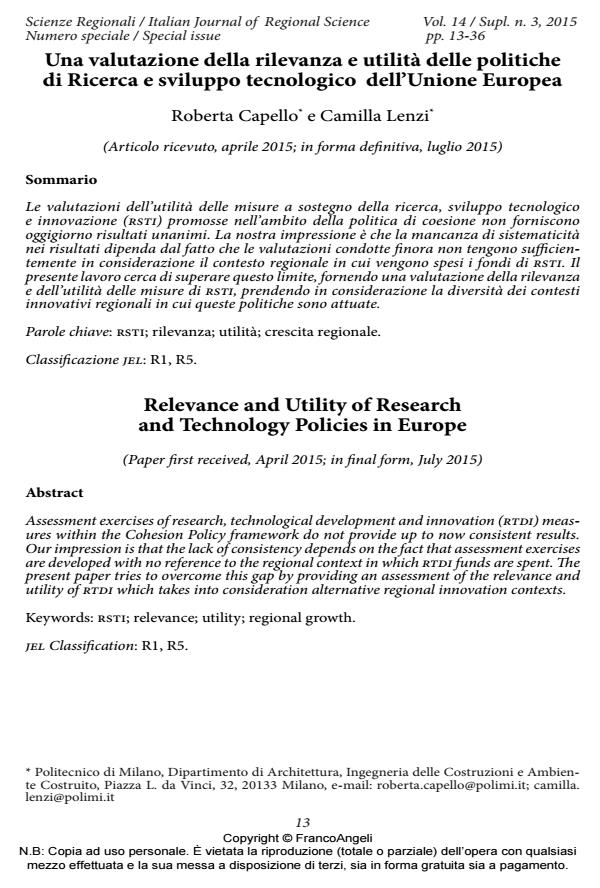Una valutazione della rilevanza e utilità delle politiche di Ricerca e sviluppo tecnologico dell’Unione Europea
Titolo Rivista SCIENZE REGIONALI
Autori/Curatori Roberta Capello, Camilla Lenzi
Anno di pubblicazione 2015 Fascicolo 2015/3 Suppl.
Lingua Italiano Numero pagine 24 P. 13-36 Dimensione file 290 KB
DOI 10.3280/SCRE2015-S03002
Il DOI è il codice a barre della proprietà intellettuale: per saperne di più
clicca qui
Qui sotto puoi vedere in anteprima la prima pagina di questo articolo.
Se questo articolo ti interessa, lo puoi acquistare (e scaricare in formato pdf) seguendo le facili indicazioni per acquistare il download credit. Acquista Download Credits per scaricare questo Articolo in formato PDF

FrancoAngeli è membro della Publishers International Linking Association, Inc (PILA)associazione indipendente e non profit per facilitare (attraverso i servizi tecnologici implementati da CrossRef.org) l’accesso degli studiosi ai contenuti digitali nelle pubblicazioni professionali e scientifiche
Le valutazioni dell’utilità delle misure a sostegno della ricerca, sviluppo tecnologico e innovazione (rsti) promosse nell’ambito della politica di coesione non forniscono oggigiorno risultati unanimi. La nostra impressione è che la mancanza di sistematicità nei risultati dipenda dal fatto che le valutazioni condotte finora non tengono sufficientemente in considerazione il contesto regionale in cui vengono spesi i fondi di rsti. Il presente lavoro cerca di superare questo limite, fornendo una valutazione della rilevanza e dell’utilità delle misure di rsti, prendendo in considerazione la diversità dei contesti innovativi regionali in cui queste politiche sono attuate.
Parole chiave:Rsti; rilevanza; utilità; crescita regionale.
Jel codes:R1, R5
Roberta Capello, Camilla Lenzi, Una valutazione della rilevanza e utilità delle politiche di Ricerca e sviluppo tecnologico dell’Unione Europea in "SCIENZE REGIONALI " 3 Suppl./2015, pp 13-36, DOI: 10.3280/SCRE2015-S03002